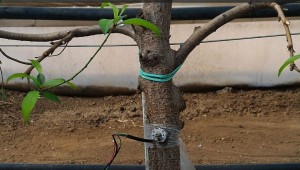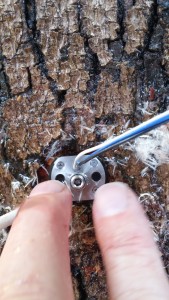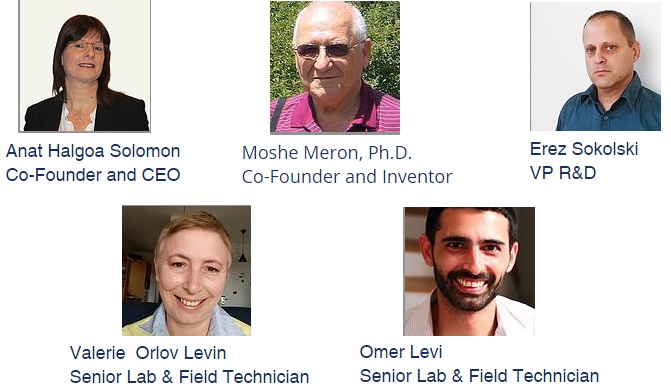The Saturas stem water potential concept was developed from the field by Dr. Moshe Meron, a senior researcher at MIGAL Research Institute and a leading member of the Saturas team. MIGAL supports about 10,000 farmers in the north of Israel, who produce approximately 20% of the national agriculture production and is internationally recognized as a hub of agro-innovation. This strong position in the field contributes a lot to our understanding of the farmers’ real needs. Saturas was established with funding and support from the Trendlines Agtech incubator, the only agriculture and food technology focused technology incubator in Israel, and a member of The Trendlines Group.
To date, Saturas has achieved proof of concept for our technology, and we have successfully tested our technique for embedding the sensor into the stem. The field tests were conducted on peach and citrus trees at the Hula Valley Orchards Experimental Farm. The results were consistent with the stem water potential measurement using manual measurement tools and successfully demonstrated continuous measurement of the water status in the tree.
The Problem: 80% of farmers irrigate their trees without any scientifically – based information. This causes water waste, affects thequality and quantity of the fruit, andreduces profitability. Precision irrigation technology can provide solutions to enable farmers to irrigate at the right time and use the precise amount of water.
Accurate Water Status: Stem water potential (SWP) is scientifically recognized as the most accurate measurement of water status in plants. Today farmers can only use a manual, labor-intensive procedure for SWP measurement for optimal irrigation.
The Technology

SWP is measured through a sensor embedded in the tree trunk which provides
- the best location due to integration
- direct contact with water tissues
- direct water status measurement
Embedding the sensor in the tree trunk eliminates the problems associated with placing the sensors in the soil, leaves or branches.
The Saturas sensor provides accurate information for optimized irrigation to reduce water consumption with no stress to the plants, and increases fruit production and quality. Saturas’ precision agriculture sensing system includes miniature implanted sensors, wireless transponders, and delivery of information to the farmer’s Internet device: computer, tablet or smartphone.
The sensor system components
- A membrane osmometer
- A web-integrated communication system
- A green solar batteryAdvantages
- Continuous plant water status measurement
- Intuitive and efficient information display
- Low maintenance
- Cost effectiveness
Finance round
Saturas and the Migal Galilee Research Institute, recently announced t
Anat Halgoa Solomon, CEO of Saturas, commented: “This last finance round is an important milestone for the company, as it enables us to complete the product development and execute our market penetration plan. The investment round was preceded by a series of successful field trials last year, demonstrating the proof of concept of Saturas’ embedded stem water sensor.”




















